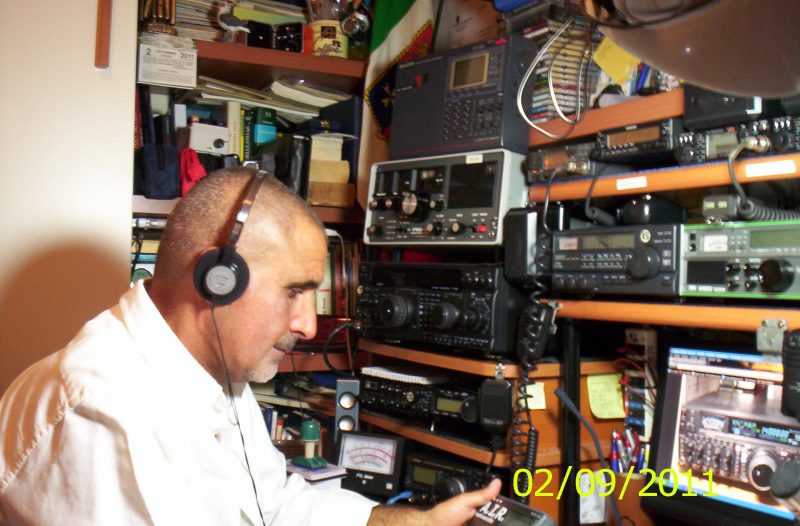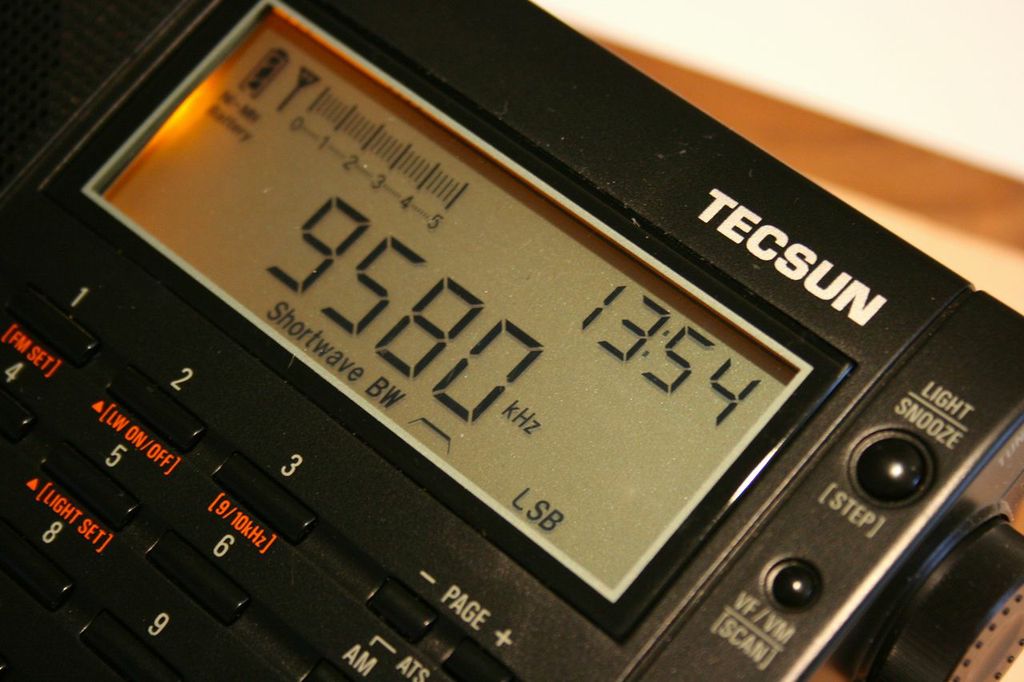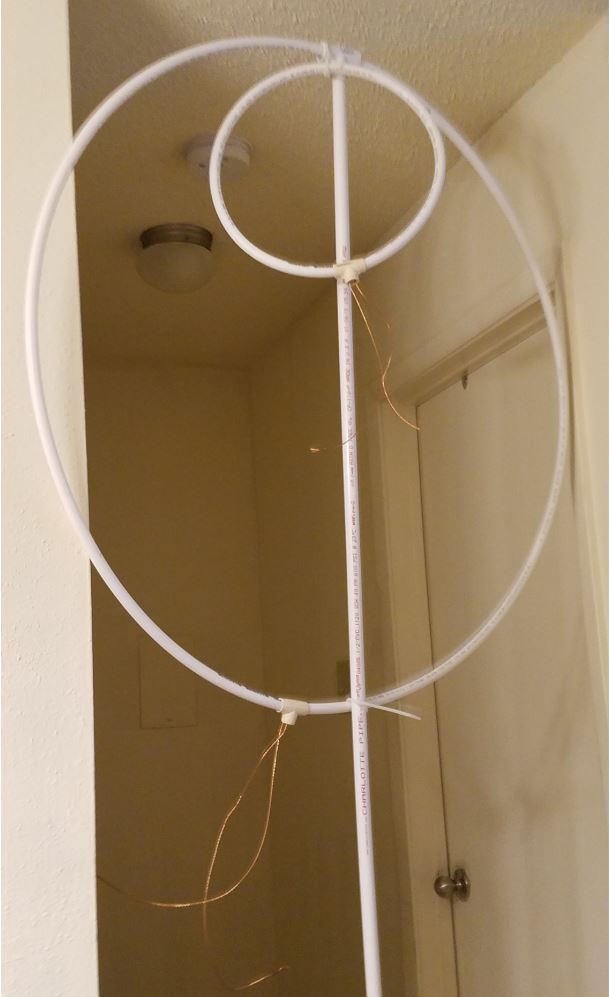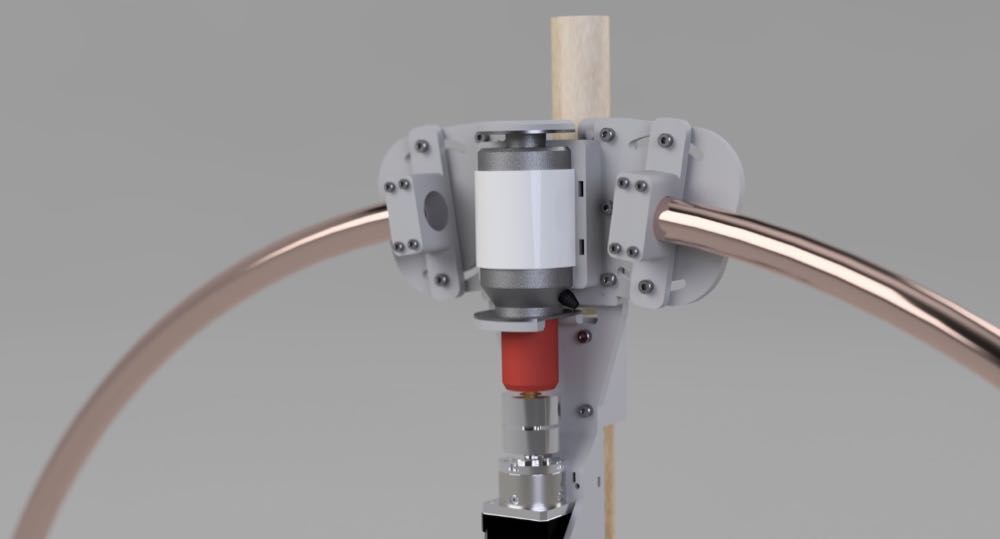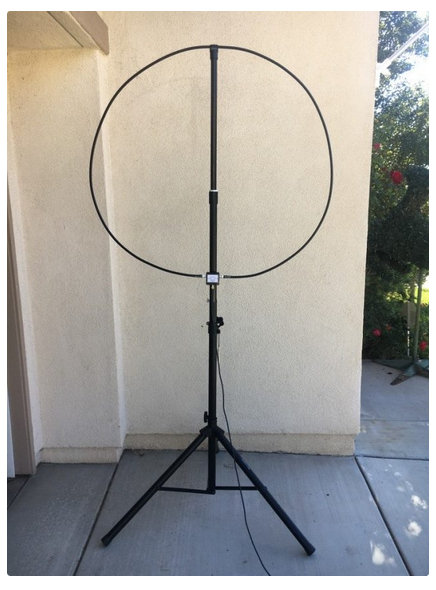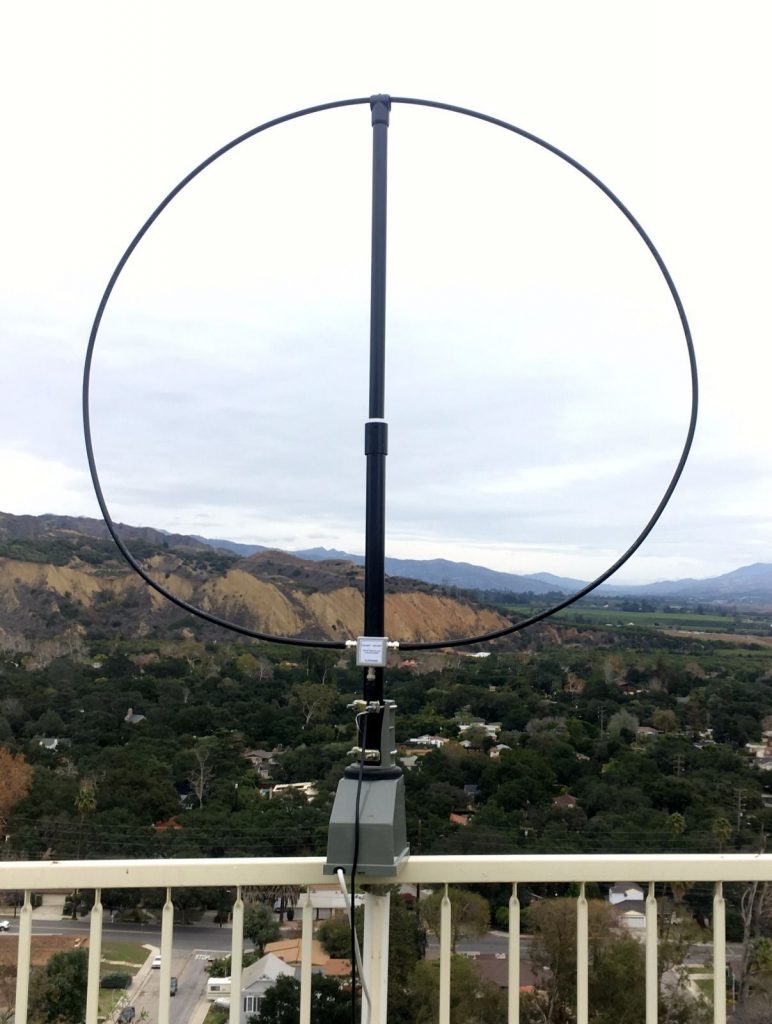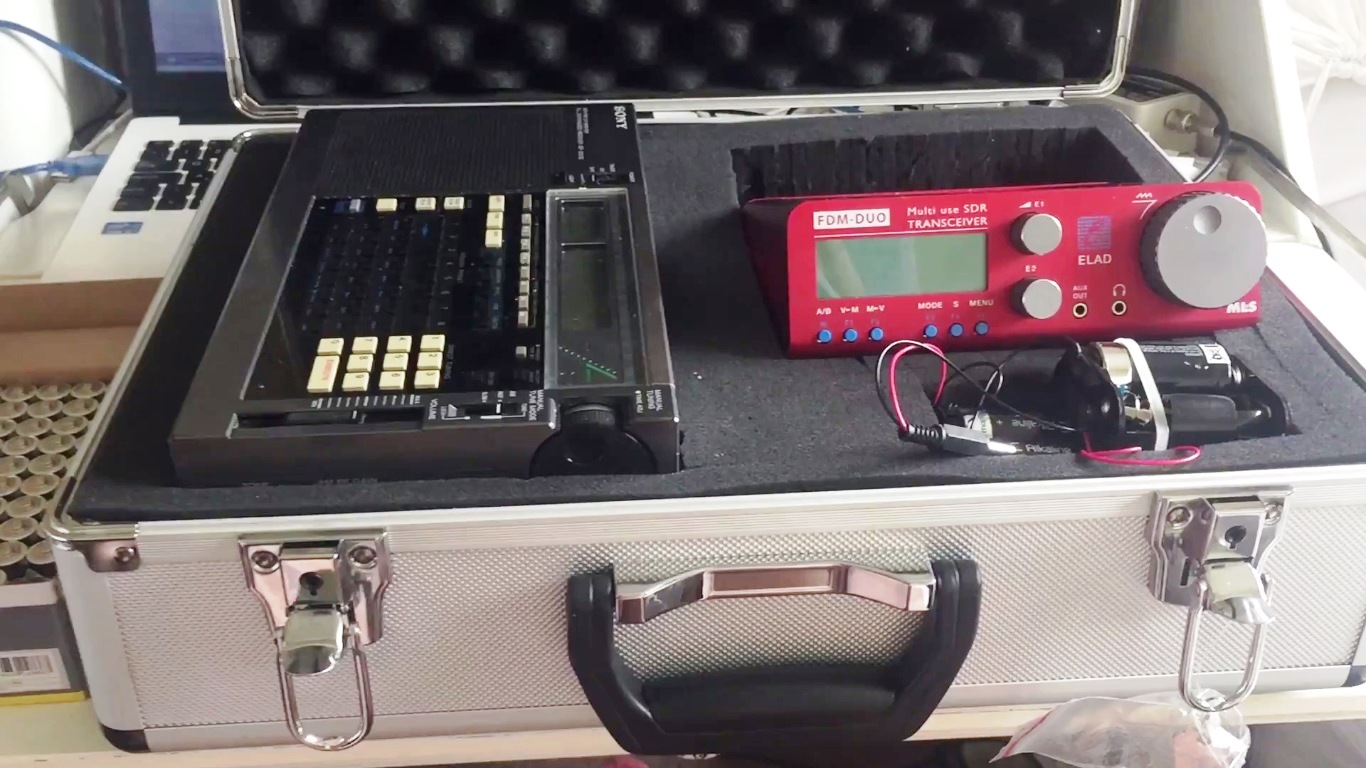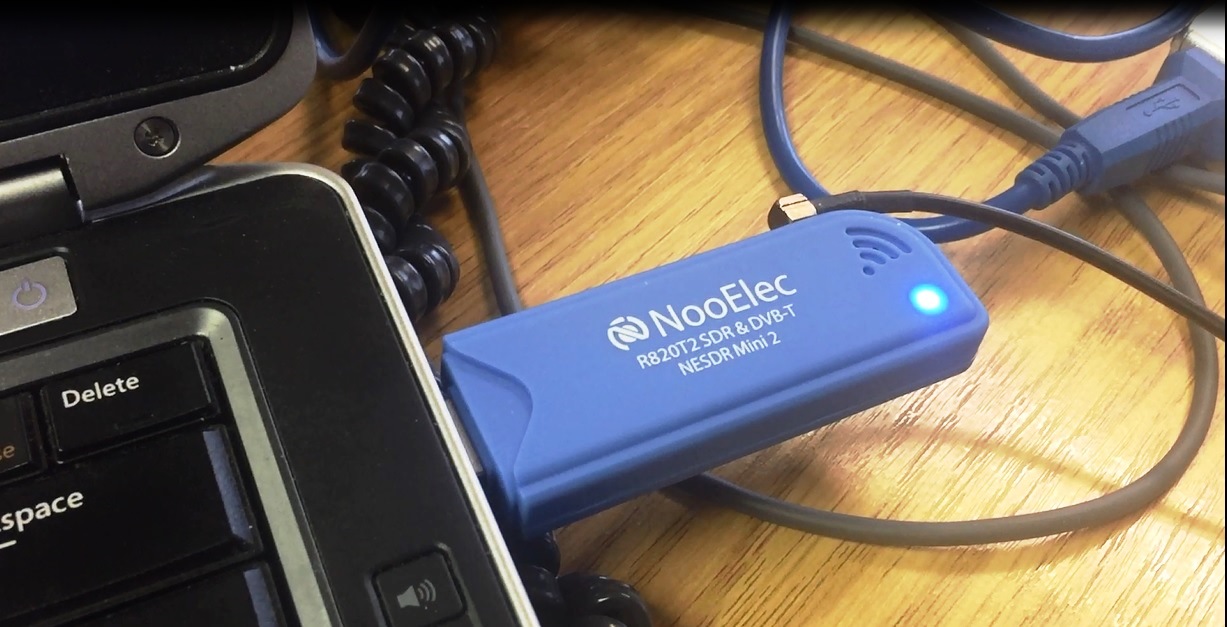Many thanks to SWLing Post contributor, Giuseppe Morlè (IZ0GZW), who shares the following:
I’m Giuseppe Morlè from Formia, central Italy, on the Tyrrhenian Sea.
I wanted to share with you and friends of the SWLing Post community this antenna project of mine dedicated to those who do not have enough space on the roof or in the garden to install antennas.
These are two separate loops, with two different diameters, one 60 cm, the other 90 cm, each with two variables for tuning … the system is able to receive from 3 to 30 MHz.
I joined these two loops in an opposing way, better to say crossed that can communicate with each other due to the induction effect that is created between the two small coupling loops that are placed one under the other at the top.
In the videos you will be able to see how the antenna system receives. I can use one loop at a time, to detect the direction of the signal or I can use them together for a more robust signal and in an omnidirectional way.
I really like experimenting with the induction effect and you can see that even when closed at home the two loops do a great job.
From my YouTube channel:
I’m not a technician but I really want to experiment to try to listen as well as possible.
Thanks to you and CIAO to all the listeners of the SWLing Post community.
Giuseppe Morlè iz0gzw.
Very cool, Giuseppe! I must say I’ve never tried dual loop experiments like this where one can experiment with the induction interplay. I imagine this could give you some interesting nulling capabilities if you have an unwanted station interfering with a target low-band signal. Thank you again for sharing!

